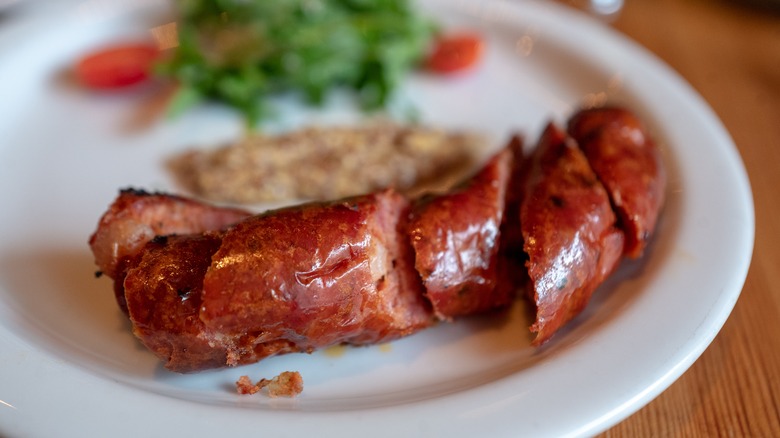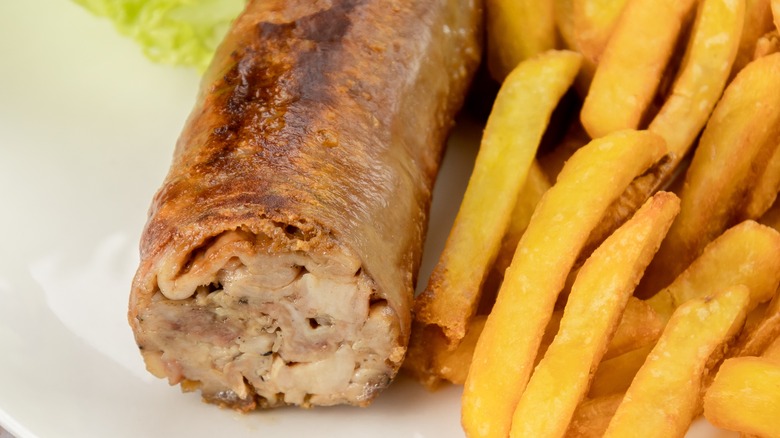What Makes Southern Andouille Sausage Different From The Original
Andouille sausage is familiar to most of us as the warm and spicy red-hued staple of Louisiana, but it descends from a distant relative that, on the surface, it doesn't seem to have much in common with. Andouille's story started in France, where it is also referred to as Andouillette. It's a pork sausage that comes from the Champagne region and has a history dating back to the Middle Ages. It began its journey to the U.S. with a stopover in Canada, as immigrants from Western France, where Champagne is located, settled in the coastal regions of what was then New France. Following the British conquest of the territory, the settlers, known as Acadians, were forcibly removed from the area. Many Acadians resettled in Louisiana, which remained under French control until 1803, when Louisiana became part of the U.S.
But that's not the end of the changes that created Southern Andouille as we know it. Louisiana, but New Orleans especially, was a society comprised mainly of émigrés that, along with the French Cajuns, included folks from Spain, the Caribbean Islands, Germany, and Africa. While Andouille retained its French name, it took on the smoky flavors and spices of Creole and Cajun cooking, becoming nearly unrecognizable in the process. If you love Southern Andouille, you might be unpleasantly surprised by the French original, a pale sausage packed not with cuts of muscle but intestines that's divisive even in its home country.
Andouille is a more spicy, crowd-pleasing sausage than the French original
French Andouillette is a term that has numerous regional variations, but the Champagne version is the one most frequently cited. The sausage filling is pork tripe, which is then flavored with onions, herbs, and even some Champagne wine. It's not a particularly popular sausage in France, as it has a notoriously strong aroma that The Guardian describes as "like a farmyard." However, it has a mild and straightforward pork flavor when done well. In contrast to Southern Andouille, which gets a lot of its flavor from the smoking process, Andouillette is cooked slowly in a skillet. A dish comprised mainly of offal has to keep the fans it has, which is why an organization in France is dedicated to policing its production, so poorly made versions don't sully Andouillette's already controversial name.
Louisiana's Andouille is a much more spiced, populist affair. Although it's also made from pork, the American version gets about as physically far away from the French as possible, using pork shoulder instead of tripe. Beyond being smoked for hours, it's also heavily flavored with Cajun seasonings like pepper, garlic, and cayenne. It's well-seasoned and sharp-tasting with a solid texture, a far cry from the mild French style. Andouille really shows how food can be completely transformed by geography and cultural interaction, holding on to its origins in name only while adapting to a new home.

